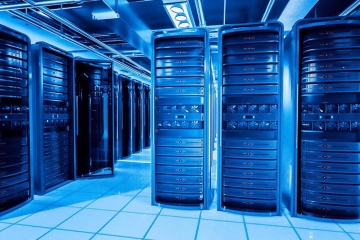Lone work is an increasing concern for many data centers, especially as the "great resignation" continues and organizations are operating with fewer employees. Some companies have found success in allowing data center sites to make decisions and facilitate lone work policies based on the location of the site. This allows them to accommodate the various rules and regulations specific to the site's location as well as meet cultural expectations. Others have a more direct approach requiring the entire organization to follow one policy.
No matter what approach you take, it is the responsibility of EHS professionals to ensure some form of protocols and procedures are in place to protect your lone workers and prioritize safety.
Lone Worker Defined
A lone worker is a person (as the name suggests) who is performing their job alone, with no supervision or partner to help. Lone work also includes situations where several people are in the same building but are out of hearing range and/or out of sight from one another.
Lone workers exist in almost every industry and given the increasing number of data centers and their required 24x7 operations, more and more lone workers can be found in data center operations. While lone work can be a cost-effective model for data centers, it can also present greater risk to employee safety and well-being, especially if there is no lone work process in place.
Understanding Lone Work Risk
Lone working is an ongoing issue with all data centers due to the nature of their business. While data centers may seem like relatively low-risk environments, they can present major risks such as falls from heights, fire, medical emergency and electric shock -- all of which have the potential to be fatal, especially if not treated quickly. Not to mention, with large buildings and expansive campuses, 24/7 shifts, and higher risk job tasks, it is important that employers either restrict lone working or come up with a process to reduce the risk.
In the United States, from a regulatory perspective, the General Duty Clause requires employers to make a reasonable effort to ensure that all employees, including those working alone, do not encounter workplace hazards. For lone workers, employers can abide by this clause by regularly checking in with employees, developing employee reporting and communication processes, and updating lone worker policies to recognize new and evolving hazards.
In countries like the United Kingdom and Australia, employers are legally required to evaluate lone working and if applicable include it in their risk assessment. This doesn’t have to be a separate risk assessment, but can be included in the general risk assessment. In most Australian states, a communication plan is required to be developed as well.
As you start to develop your program, it is helpful to begin with a lone worker risk assessment to categorize the hazards and rank the risks, regardless of your local requirement to do so. Not only are risk assessments a helpful starting point, but they are often a legal requirement in many countries. Risk assessments should be performed at least once a year and employees should be encouraged to provide feedback to help monitor risks and identify hazards. Once you understand the risks, you can start to develop your process.
For more on Data Center hazards and maintaining worker health and safety, download our infographic:
Develop a Lone Work Process
Using the information gathered in your risk assessment as a guide, you can begin to develop a lone work process and implement policies to keep workers safe. This can be done at the department, job, or individual task level depending on what works best and most effectively at your organization. Below we’ve outlined several key considerations when developing your process:
- Outline what activities are allowed to be done alone. While some tasks can easily and safely be done alone, other tasks should never be attempted without two or more people.
- Determine if employees should complete medical exams before working alone. Certain medical conditions can increase the risks of working alone and being aware of these conditions ahead of time will inform decision making, related to the lone working expectations for that employees.
- Determine who will be responsible for monitoring employees while they are working alone. This can either be internal resources or outsourced to a reliable vendor. Either way, employees should be aware of who this person is before starting to work alone.
- Determine how you will check-in with employees. There are many options ranging from cell phone calls, text messages, computer messaging software, and lone working devices. However, it is important to remember cell phone signals may not always work inside data centers.
- Determine how often you will check in with employees. The frequency may correspond to the level of risk and could be once per shift, every hour, or every 15 minutes. Set a standard and stick to it.
Employee Engagement is Critical
Having a lone working procedure can literally save a life, but it requires full employee engagement. Consider involving employees with the development of your process.
Not only will it help them be part of the solution that could save their life, but they will be bought into the procedures and requirements upfront. They can also help you understand barriers to success such as striking a balance of check-ins with the work being completed on time and what devices may or may not work in the data center.
Ensuring all employees are properly trained will have a major impact on the success of your lone work program and will help to promote a culture of safety throughout your organization.
No matter what approach you take to lone worker safety, the end goal remains the same -- make lone worker health and safety a top priority.
If you’re ready to get started on a lone work procedure but need help getting started, reach out to Antea Group to learn more about EHS and sustainability support for Data Centers.
EHS & Sustainability Support for Data CentersWant more news and insights like this?
Sign up for our monthly e-newsletter, The New Leaf. Our goal is to keep you updated, educated and even a bit entertained as it relates to all things EHS and sustainability.
Get e-NewsletterHave any questions?
Contact us to discuss your environment, health, safety, and sustainability needs today.








